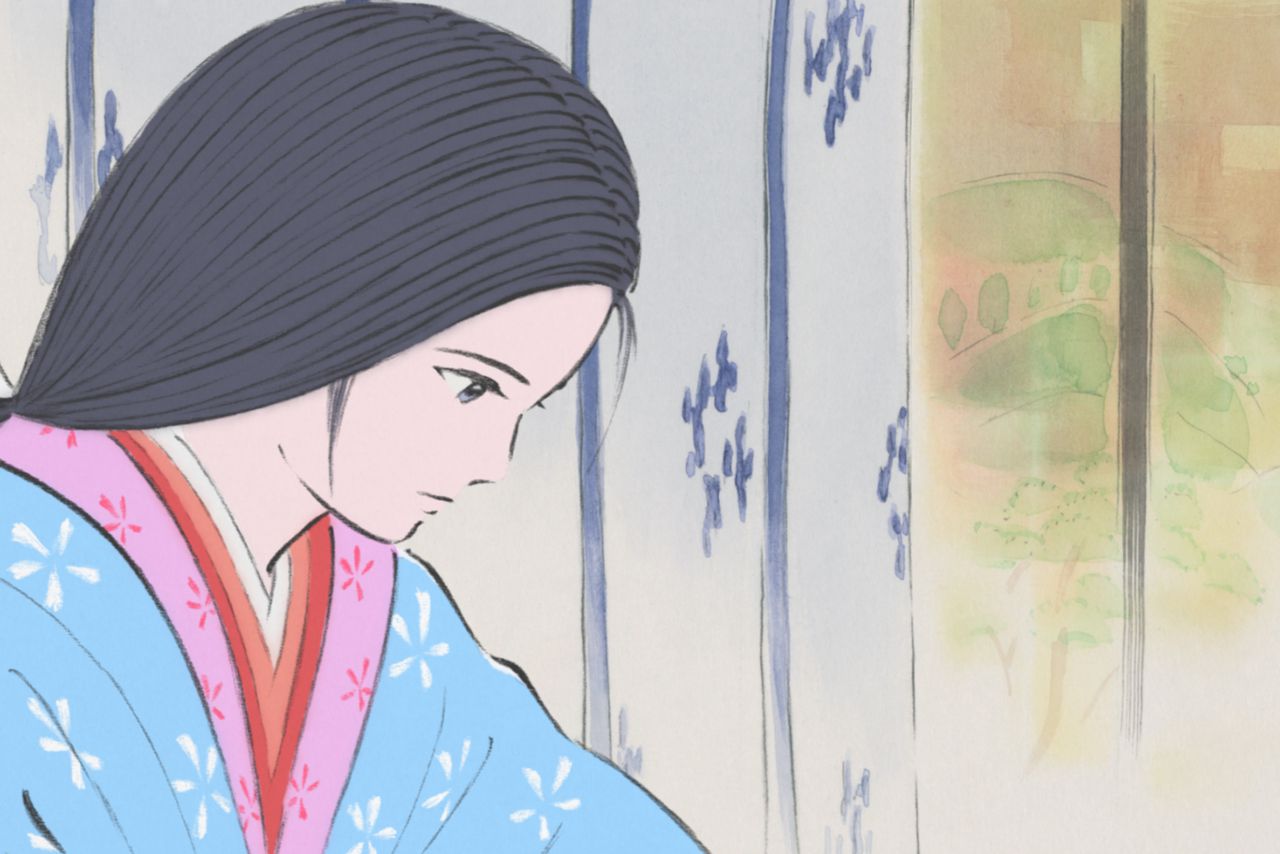By Chlotrudis Independent Film Society
Rating: 5 cats
Director: Isao Takahata
Starring: Aki Asakura | Hikaru Ijûin | Nobuko Miyamoto | Takei Chii | Yukiji Asaoka

Original language title: Kaguyahime no monogatari
Country: japan
Year: 2014
Running time: 137
IMDB: http://www.imdb.com/title/tt2576852/combined
Jason says: “Though Hayao Miyazaki’s retirement from directing animated features with THE WIND RISES deserved all the attention it got last year, there is somewhat less noise being made about Isao Takahata’s swan song, THE TALE OF PRINCESS KAGUYA, though Takahata has made a number of classics at their Studio Ghibli production company that have not gained the same sort of traction in America. As such, is not necessarily a surprise that Takahata says goodbye with a movie that may be a tough sell in the U.S., but is just as brilliant as its companion.
“In this one, bamboo cutter Sanuki no Miyatsuko (voice of Takei Chii) observes a strange shoot growing impossibly fast, and is doubly surprised to see the to open to reveal what looks like a tiny princess, inches tall. The sprite becomes a regular-sized baby at the touch of the man’s wife (voice of Nobuko Miyamoto), and will continue to be subject to growth spurts that have the village children calling her ‘Li’l Bamboo’ as she surpasses them in age. As she becomes a teenager, the first presents her father with other gifts that would allow him to fulfill what he believes is her destiny to become a princess, though the girl (voiced by Aki Asakura) is not a natural fit for the capital whether the newly christened Kaguya is dealing with tutors or suitors.
“It’s a charming, episodic little story, breaking out into a number of smaller, often funny tales, each with a rhythm of its own, strung together in a way that the audience doesn’t really feel the film’s long running time – 137 minutes is highly unusual for an animated picture – at all. There are bits that feel like they could be cut down – does one really need five princes and ministers attempting to woo Kaguya? – but each is small enough that removing it wouldn’t tighten things notably and a couple of good moments would be lost. It’s a leisurely pace that can encompass an entire life, even if there’s some irony in that parts of Kaguya’s are accelerated.
“What’s seen on-screen is beautiful, but Takahata avoids the temptation to make it ‘stunning’. The style is very much hand-drawn with the look of watercolors, and while there are brief moments where things seem to move a bit awkwardly – Takahata works in such a two-dimensional style that things like pans through the bamboo forest seem a bit odd in comparison – there’s a beautiful simplicity to it that matches the director’s fondness for rural simplicity, a strong theme of the story. It’s a look that’s flexible enough to encompass the city, though, and there are a few sequences where the visuals become a bit more sketch-like to show panicked fantasies. And the end does stun a bit in a well-earned sequence that does not exactly play out in the traditional way.
“(Note: The next paragraph contains discussion of the film’s finale; bookmark and return later or simply skip ahead to the final paragraph!)
“The original story is a folk tale known as ‘The Tale of the Bamboo Cutter’, and I suspect that the point of that story is to appreciate the gifts life gives you on their own merits as opposed to trying to use them for gain. That’s still here, but the focus moves to Kaguya’s perspective early enough that the ultimate message, while couched in fantasy and spirituality, is ultimately simpler – our time is limited and should be cherished. Takahata embraces the Buddhist concepts of reincarnation and leaving one’s old life behind in a way that is both beautiful and horrifying, with the music by Joe Hisashi doing a great deal to help sell this disconnect.
“In some ways, it’s an unusual end to Takahata’s career; his most famous films are not built on fantasy but ordinary life, shown in an honest enough way that folks in America have sometimes had trouble embracing. But he leaves the stage by giving the audience a good story told beautifully, along with a little bit to think about after. 5 cats
“Seen 22 September 2014 in Alamo Drafthouse South Lamar #5 (Fantastic Fest, DCP)”
